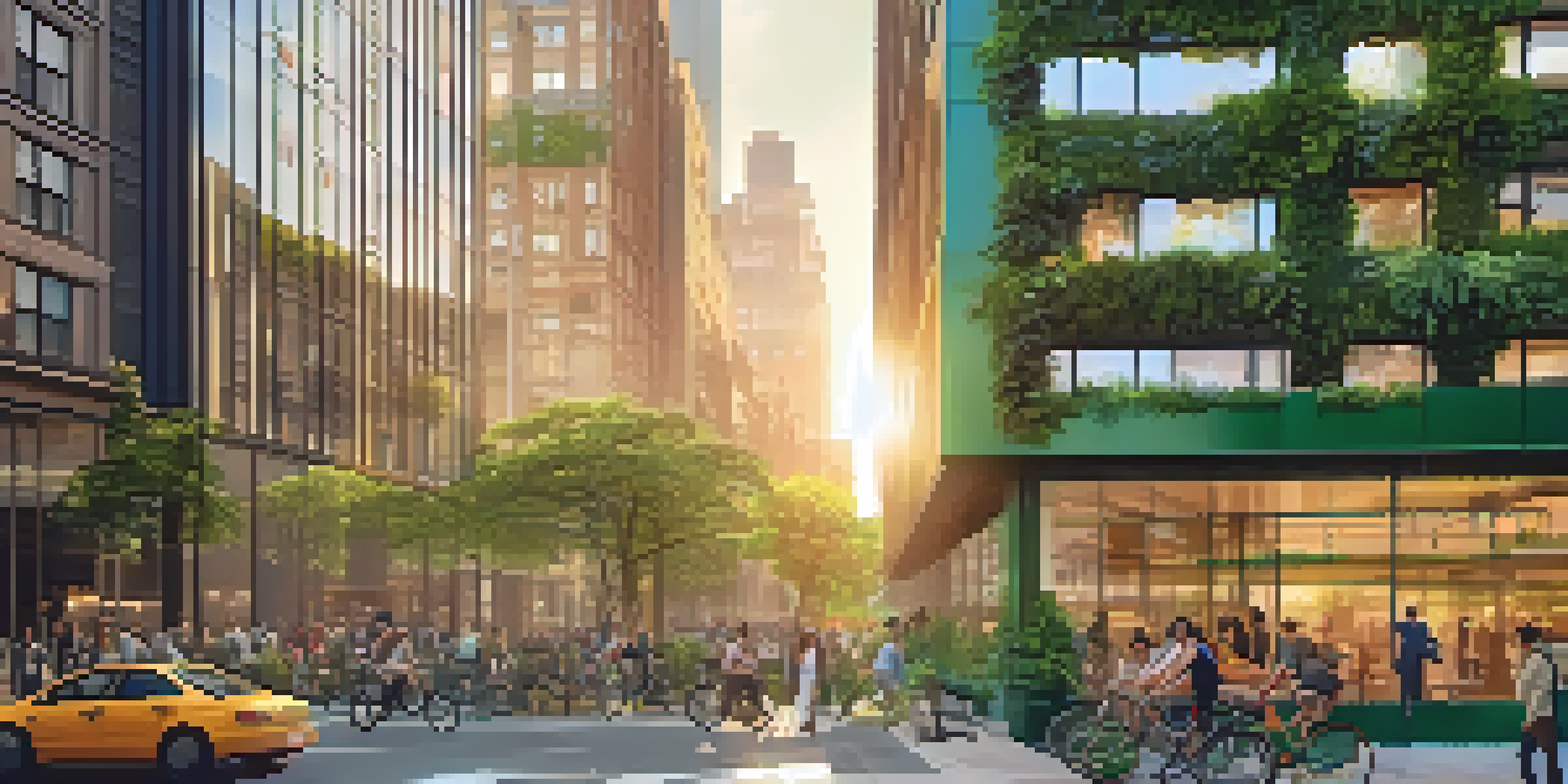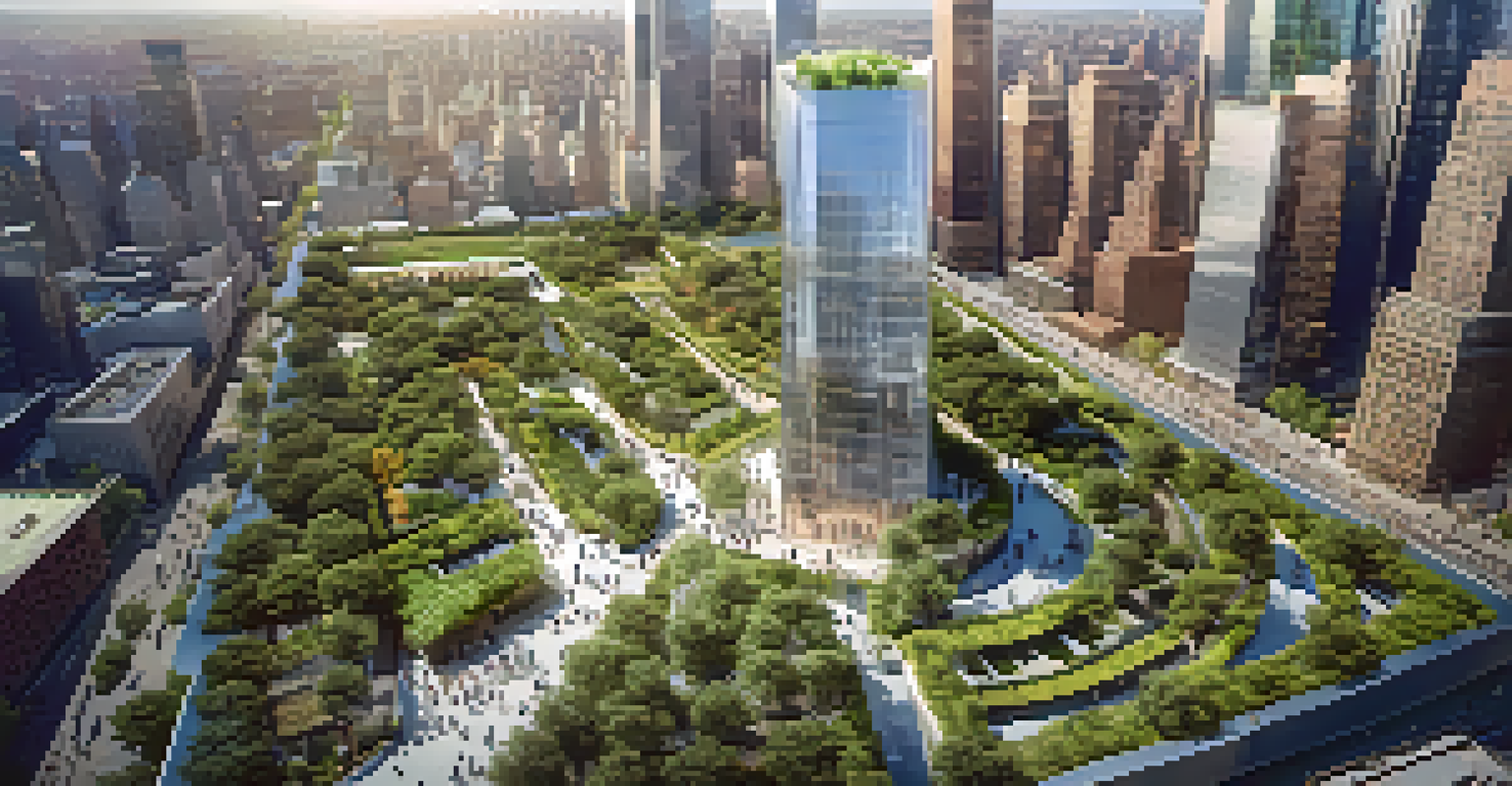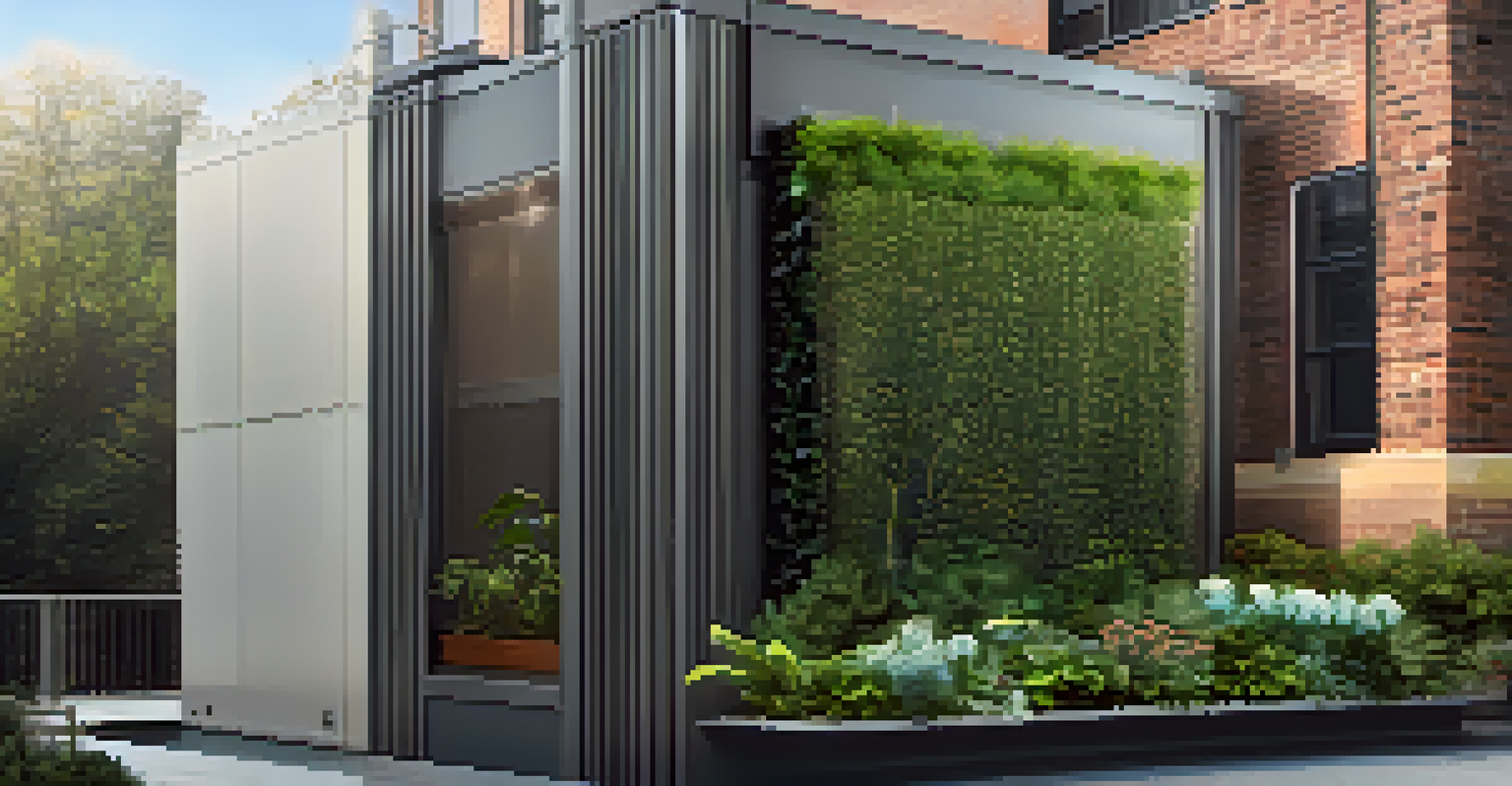Innovative Green Building Practices in NYC's Urban Projects

Understanding Green Building: What It Means for NYC
Green building refers to the practice of creating structures that are environmentally responsible and resource-efficient throughout their lifecycle. In NYC, this approach is vital due to the city's dense population and finite space. By focusing on sustainability, developers can minimize the environmental impact while enhancing the quality of life for residents.
The greatest threat to our planet is the belief that someone else will save it.
These buildings often incorporate energy-efficient systems, sustainable materials, and innovative designs that reduce waste and enhance urban living. For instance, the use of recycled materials in construction not only lessens the demand for new resources but also supports local economies. Understanding these principles is the first step toward appreciating the transformative impact of green building in urban settings.
As we delve deeper into NYC's urban projects, it's important to recognize that these practices are not just trends; they are essential for creating resilient cities in the face of climate change. By prioritizing green building, NYC is setting an example for cities worldwide, showing that environmental responsibility can go hand in hand with urban development.
The Role of LEED Certification in NYC Developments
One of the most recognized standards for green building is LEED, or Leadership in Energy and Environmental Design. In New York City, many new constructions strive for LEED certification as it signifies a commitment to sustainability. Buildings that achieve this certification demonstrate reduced energy and water usage, among other benefits.

LEED certification involves a rigorous evaluation process, assessing various aspects like site development, water efficiency, energy usage, and the materials selected for construction. For example, the Bank of America Tower in Manhattan is not only iconic in design but also achieved LEED Platinum certification, showcasing a remarkable commitment to sustainability.
Green Building Enhances Urban Living
Green building practices in NYC focus on sustainability, improving environmental impact while enriching residents' quality of life.
This certification not only elevates a building's profile but also often results in financial benefits for developers and tenants alike. Lower operating costs and increased property values are just a couple of advantages that come with LEED-certified buildings, making them an attractive option for investors and occupants alike.
Biophilic Design: Bringing Nature into Urban Spaces
Biophilic design is about integrating natural elements into the built environment, creating spaces where people feel connected to nature. In NYC, this approach is gaining traction, especially in urban projects that aim to enhance residents' well-being. Incorporating greenery, natural lighting, and outdoor spaces can significantly improve mental health and productivity.
Sustainability is not a destination, it’s a journey.
For instance, buildings like the VIA 57 West incorporate green roofs and terraces, allowing residents to enjoy nature without leaving the city. These elements create a serene atmosphere amidst the hustle and bustle of urban life, fostering a sense of community and relaxation. It's a perfect example of how biophilic design can transform the urban experience.
Moreover, studies have shown that access to nature can reduce stress levels and improve overall health. As more developers recognize these benefits, we can expect to see an increase in biophilic designs across NYC, paving the way for healthier, happier urban living.
Harnessing Renewable Energy in Urban Architecture
Renewable energy sources, such as solar and wind power, are becoming staples in NYC's green building practices. By harnessing these resources, buildings can significantly reduce their carbon footprint and reliance on non-renewable energy. Many new developments are now incorporating solar panels and energy-efficient systems to generate power sustainably.
Take the example of the Pacific Park project, which integrates solar technology and energy-efficient designs to create a sustainable community. This project not only aims to provide affordable housing but also emphasizes the importance of renewable energy in urban settings. It's a forward-thinking approach that aligns with NYC's commitment to sustainability.
LEED Certification Drives Sustainability
Achieving LEED certification signifies a commitment to energy efficiency and environmental responsibility in NYC developments.
As NYC pushes toward ambitious climate goals, the integration of renewable energy in urban projects will play a crucial role in achieving these targets. By investing in sustainable energy solutions, New York City is not only improving its environmental impact but also setting a precedent for other urban areas to follow.
The Importance of Water Conservation in Urban Areas
Water conservation is critical in a bustling metropolis like NYC, where infrastructure often struggles to keep pace with demand. Innovative green buildings are now incorporating systems that recycle water and promote efficient usage. Techniques like rainwater harvesting and greywater recycling are becoming common practices in new developments.
For example, the Solaire building in Battery Park City was among the first residential buildings in the U.S. to implement a greywater system, recycling water from sinks and showers for irrigation and toilet flushing. This not only reduces the overall water consumption but also helps in managing stormwater runoff, which can lead to flooding in urban areas.
With NYC grappling with the consequences of climate change, these water conservation measures are essential for sustainable urban living. They allow cities to be more resilient while ensuring that residents have access to clean water, highlighting the critical relationship between green building practices and resource management.
Smart Technology: Enhancing Energy Efficiency
Smart technology is revolutionizing how buildings operate, especially in urban environments like NYC. The integration of smart systems allows for real-time monitoring and management of energy use, making buildings more efficient and responsive to occupants' needs. From smart thermostats to energy management systems, these technologies are paving the way for greener, smarter urban living.
A great example is the Edge, a high-rise office building that features advanced building management systems to optimize energy consumption. By utilizing sensors and data analytics, the Edge can adjust lighting and heating based on occupancy, significantly reducing energy waste. This level of efficiency is not only good for the environment but also translates into cost savings for businesses.
Community Involvement Shapes Projects
Involving local residents in urban development fosters sustainable projects that reflect community needs and values.
As NYC continues to innovate, the role of smart technology in green building will only grow. By embracing these advancements, urban projects can contribute to a more sustainable future, showcasing how technology can enhance our urban environments while promoting energy efficiency.
Community Engagement in Sustainable Urban Development
Community engagement is a vital component of successful urban development, especially when it comes to sustainability. In NYC, developers are increasingly involving local residents in the planning process to ensure that projects meet the needs of the community and reflect their values. This collaboration fosters a sense of ownership and pride in the developments.
For instance, the Hudson Yards project engaged various community stakeholders to integrate green spaces, public art, and affordable housing into its design. By prioritizing input from residents, developers can create spaces that are not only environmentally friendly but also socially equitable. This approach helps to build stronger communities and enhances the overall urban experience.

As more projects adopt this inclusive model, we can expect to see a shift toward more sustainable and community-focused urban development. By valuing the voices of residents, NYC can continue to lead the way in innovative green building practices while creating vibrant, livable spaces for all.